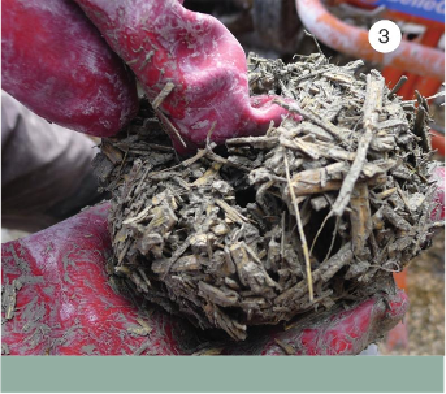Civil Engineering Reference
In-Depth Information
3. If it breaks cleanly, then it is ready.
With a pan mixer, the mixing team typically includes two people: one organizing the ma-
terials and feeding the mixer, and another below operating the chute, i.e. filling tubs and
handing them to a team of people ferrying them to the 'tampers', who are placing the mix
into the shuttering. Once each tub has been emptied into the shuttering, the ferrying team
returns the empty tubs to the mixer to be refilled and brought back, or to wait for the next
mix. However, it may be possible for one experienced person to operate the mixer alone,
and this is certainly possible if it has a built-in water tank, automating the process of meas-
uring and adding water.
The quantity produced with an 800-litre pan mixer will be (depending on the exact quantit-
ies used) around 0.4m
3
per mix. This of course takes a while to produce, given the mixing
time, the physical work involved in feeding the mixer, and the time taken to empty it in-
to 30-litre or 45-litre Gorilla Tubs (the 30-litre type is more useful, as everyone can carry
them) before a new batch can be started. It is important at first to give your mixing team
time to get used to the process, so start slowly: with hempcrete, getting it right is always
more important than getting it done quickly.
Once you are used to the process, you will work out a general rule of thumb for the quantity
of mix you can knock out in a normal working day, but remember that the mixing speed
depends on a lot of other factors as well, such as other people needing to use the telehand-
ler, and the distance that the ferrying team have to walk to empty the tubs. Ultimately, of

Search WWH ::

Custom Search